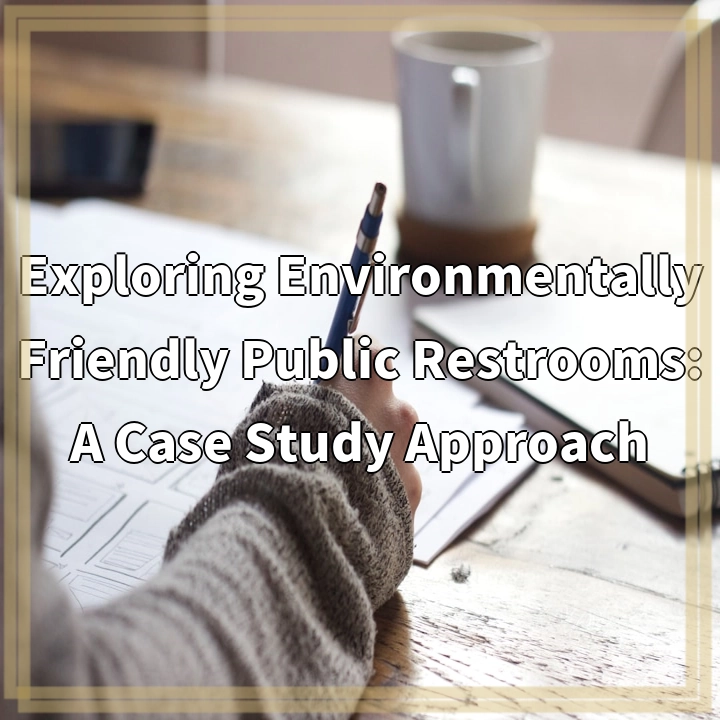
What are Environmentally Friendly Public Restrooms?
Environmentally friendly public restrooms are facilities designed to minimize their negative impact on the environment and promote sustainable practices. These restrooms incorporate various strategies and technologies to reduce waste, conserve water and energy, and promote overall environmental sustainability.
Real-World Problems Associated with Environmentally Friendly Public Restrooms
While environmentally friendly public restrooms offer numerous benefits, they also face several challenges in implementation and operation. It is important to acknowledge and address these real-world problems to ensure the success and effectiveness of eco-friendly restroom initiatives.
1. Cost and Upfront Investment
One of the major challenges in adopting environmentally friendly public restrooms is the initial cost and upfront investment required. Implementing sustainable technologies such as water-efficient fixtures, energy-saving lighting systems, and renewable energy sources can be expensive. This poses a financial barrier for many organizations and municipalities, particularly those with limited budgets.
2. Maintenance and Operational Issues
Maintaining and operating environmentally friendly public restrooms can be more complex compared to traditional facilities. Specialized equipment, such as waterless urinals or composting toilets, may require regular maintenance, training for cleaning staff, and proper disposal of waste. Additionally, ensuring a continuous supply of renewable energy sources and monitoring water and energy usage can add to the ongoing operational challenges.
3. User Education and Awareness
To fully benefit from environmentally friendly public restrooms, users must understand how to utilize the facilities and engage in sustainable practices. Providing clear instructions and educational signage can help raise awareness about the purpose and proper use of eco-friendly features like motion-sensor faucets, dual-flush toilets, or hand dryers. However, educating and changing user behavior on a large scale can be a considerable challenge.
4. Limited Accessibility and Infrastructure
In some regions or older buildings, the infrastructure necessary for implementing environmentally friendly public restrooms may be limited or lacking. Retrofitting existing structures to accommodate sustainability features can be difficult, requiring significant modifications and sometimes compromising the original aesthetics or layout of the facility. Additionally, access to renewable energy sources or sustainable waste management systems may be limited in certain areas, especially in remote locations.

Potential Solutions for Environmentally Friendly Public Restrooms
Addressing the real-world problems associated with environmentally friendly public restrooms requires careful planning, innovative solutions, and collaboration between various stakeholders. Let’s explore some potential solutions to overcome these challenges:
1. Funding and Financial Incentives
To tackle the cost and upfront investment challenge, governments and organizations can provide funding or financial incentives for the implementation of eco-friendly restroom projects. This can include grants, subsidies, or tax credits to offset the initial costs and encourage broader adoption of sustainable technologies.
2. Training and Maintenance Support
Providing comprehensive training programs and maintenance support to facility managers and janitorial staff can address the operational issues. Training sessions can help personnel understand the proper usage, maintenance, and repair of sustainable restroom features, ensuring their optimal performance. Additionally, creating partnerships with service providers specializing in eco-friendly restroom maintenance can ensure professional assistance when needed.
3. User Engagement and Awareness Campaigns
Educating users about environmentally friendly restroom practices can be done through engaging signage, educational campaigns, and digital platforms. This can include informative materials on water and energy conservation, waste reduction, and the benefits of sustainable restroom technologies. By creating awareness and incentivizing sustainable behaviors, users can actively contribute to reducing environmental impacts.
4. Renovation and Infrastructure Upgrades
For regions or buildings with limited infrastructure, governments and businesses can consider renovation or retrofitting schemes to adapt existing facilities. This may involve installing energy-efficient plumbing systems, integrating renewable energy sources, or utilizing innovative waste management solutions. Collaborations between architects, engineers, and sustainability experts can help optimize the design and functionality of eco-friendly restroom renovations.















